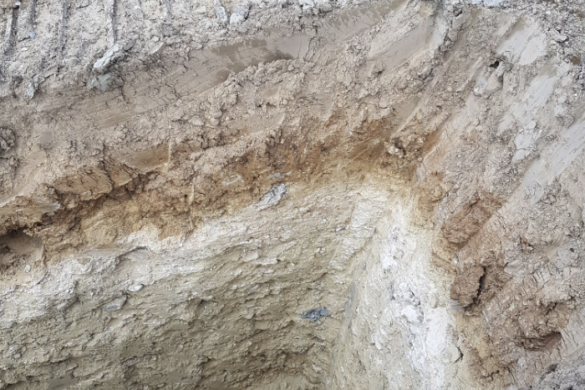Paul Pujol is one of the most respected winemakers of Central Otago and, as a seasoned producer of Pinot Noir and Alsace varieties around the world, it’s no surprise. His experience and talent in working with these varieties has made Prophet’s Rock one of the most esteemed producers in the region and Pujol is also credited with spearheading a movement towards more elegant Central Otago Pinot Noir.
A new style of Central Otago Pinot Noir and the potential of aromatics
Prophet’s Rock happens to be in one of the hottest sub-regions in Central Otago – Bendigo. The region is renowned for producing Pinot Noir with bigger tannins, but Prophet’s Rock has become known for the contrary. A gentle hand in the winery tames the chunkier tannins you tend to find in the region and Prophet’s Rock Pinot Noir can have an almost ethereal quality. It is actually the white wines that pack the bigger punch, with rich and full flavours from extensive time on the lees.
In this interview with Paul Pujol, we discuss the art of making Central Otago Pinot Noir and why this fussy variety has such an affinity for the region. Pujol also shares what he thinks makes Central Otago unique as a region and looks at the diversity found within it.
Interview with Paul Pujol at Prophet’s Rock
What makes Central Otago unique as a wine region?
I think Central Otago is a really special place. We’re a long way south, in one of the southernmost regions in the world, and so on paper it shouldn’t really work. But somehow it does!
The reason it works is a unique combination of things. We have great protection from the big mountains all around us and so it creates a small bubble of climate where you can successfully grow grapes. But if you move outside of that small area, it’s either too wet or too cold. The next big wine region is a full six hours north of here.
The mountains look after us. They also stop the rain so we have very low disease pressure here. It’s a very dry climate and low vigour, which is great for for making premium wine. It’s easy to have an organic spray regime here.
The mountains also mean that we have very cool nights here. So you have warm dry days and cool nights – you can ripen the fruit but you don’t cook it. I think that’s a signature of the region: always having great freshness.
At Prophet’s Rock, you work with several different vineyard sites. Can you tell me about the differences between them?
We’re quite small and we just produce from three vineyards. It’s a fun range of vineyards because they are really different. The Home vineyard is a terrace that was carved out by a glacier a long time ago and so the schist rock parent material has been weathered down to its finest particles. So it’s become clay and released all the calcium in the process – meaning you’ve ended up with chalk and clay soil. There’s a lens of chalk about a foot thick depending on where you are in the vineyard. That only happens on old soil structures.
Two kilometres from [Home vineyard] is Rocky Point vineyard which is extremely steep and it’s basically straight schist rock. So it’s very low vigour, very stony and has very low yields. The soil has never been farmed at either site before… there’s a very high mineral content.
And then there’s the Kopuwai Delta, which is on the valley floor and is a combination of alluvial soils from the river, and the passage of glaciers over the top. So you’ve got more loose, free-draining soil with lots of stones. So, more like the alluvial soils you’ll see in Martinborough maybe.
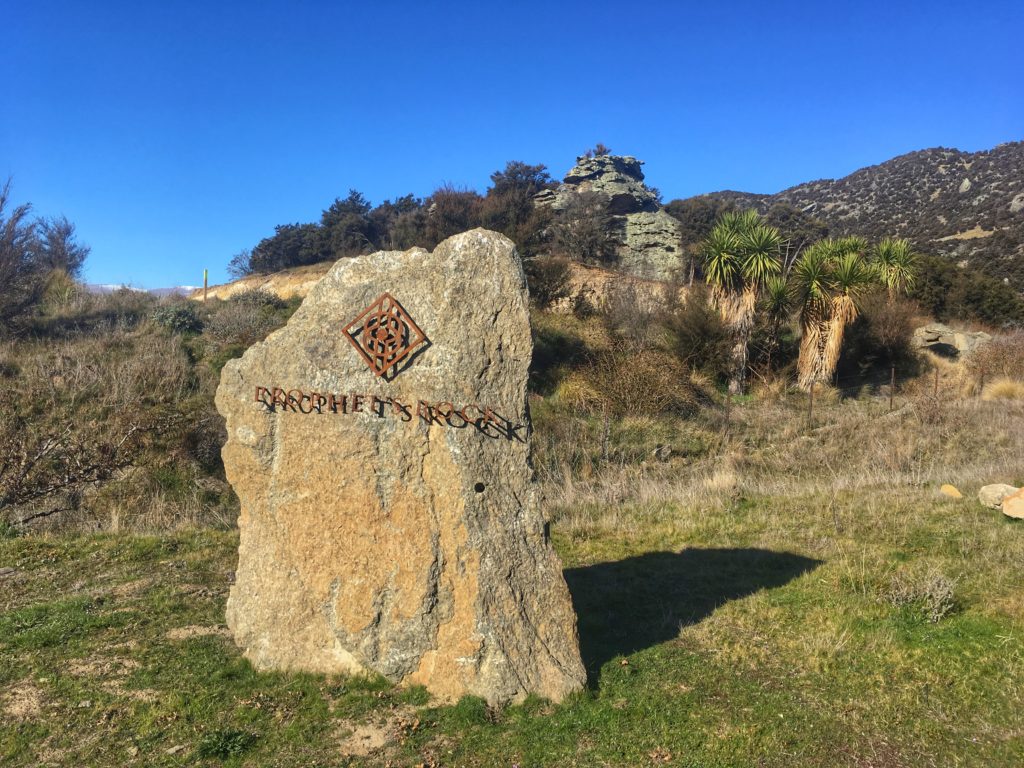
Why do you think Central Otago Pinot Noir has become so well known?
I think there’s a few things. Focus would be one of them. It’s a grape that does well in our climate. Pinot is famously fussy: too hot and it loses definition (and stops being Pinot), too cold and it’s aggressively vegetal and unripe. We sit in the window of where we get Pinot Noir ripe successfully even in our cool vintages. Because of our climate down here, with cool nights, we retain freshness – I think that’s a real signature of the region. And I think it’s one of the reasons why the wines have done so well.
You’ve also made Pinot Noir in Burgundy, can you draw some comparisons between Central Otago Pinot Noir and Pinot Noir from Burgundy?
It’s a tricky one. I don’t think anyone in Central Otago is setting out to make Burgundy. And if you did, you’re not going to succeed because Pinot is so specific to where it is and you’re never going to have the exact same conditions as you have in Burgundy. When you’re comparing the wines, both are proper cool climates so you’ve got acid structure in Burgundy and Central Otago. So that’s probably a common point. What I think is also central to both wines is a vibrancy of fruit and perhaps with a stronger varietal character. We have a lot of sunshine and a lot of UV down here so we seem to perhaps have a brighter fruit-driven expression. It does taste like ‘New World’ but in terms of the profile of the wines, it sits properly in cool climate.
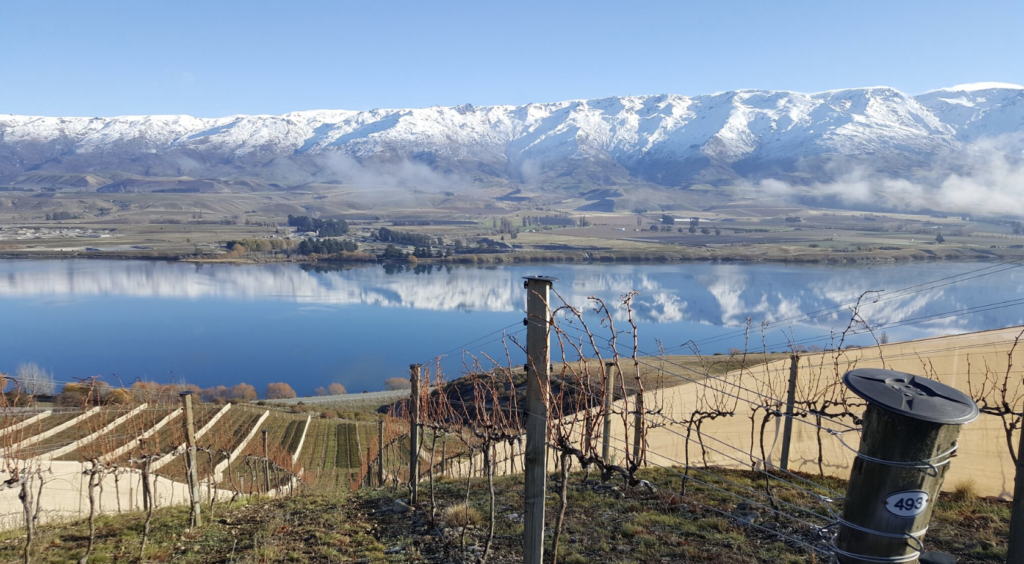
Rocky Point vineyard in Bendigo. Photo Paul Pujol.
At Prophet’s Rock, you are also very driven by Alsatian varieties and you also made wine in Alsace for several years. Can you tell us about the most important white varieties for you here?

Pinot Gris grapes after harvest. Photo Paul Pujol.
I think Riesling is the shining star of Central Otago. We successfully get it right, so that’s great. You get a wonderful acid structure but you also get really ripe aromatic flavours and they age extremely well. Old Rieslings from Central Otago is definitely something worth trying to find. Later ripening white varieties aren’t going to thrive here…
With Pinot Gris we’re really lucky down here because we can ripen Pinot Gris into that aromatic spectrum of flavour but we retain acidity, which can be a difficulty with Pinot Gris in warmer climates. So we retain freshness despite making a very aromatic style of Pinot Gris.
We are also planting Gewurztraminer and Muscat. So I guess I’m trying to shed the homesickness for Alsace!
You’ve been making wine in Central Otago for 13 years now. How have you seen it change in that time?
As the vines get older and the winemakers become more experienced, there’s been a movement of style. Growing up, I guess! The profile of the wines of the region has moved towards elegance and refinement, and away from bigger structured, perhaps later-picked styles. That [style] helped put the region on the map early on probably, but it’s also a function of what young vines want to do.
And how do you hope to see the region change in the future?
I think with any young Pinot region, people continue exploring new sites and getting to know their own vineyards even better. And just really dialling in and seeing how they handle the sites that they work with. I know, speaking for myself, I’m certainly not making the wines now the same way I did 13 years ago. You learn from your vineyard and it teaches you a few harsh lessons sometimes as well… You adjust your approach in line with that and what works on your site. The region is so diverse that what people change and what people do on each site will be really different.
Prophet’s Rock Wine Tasting Notes
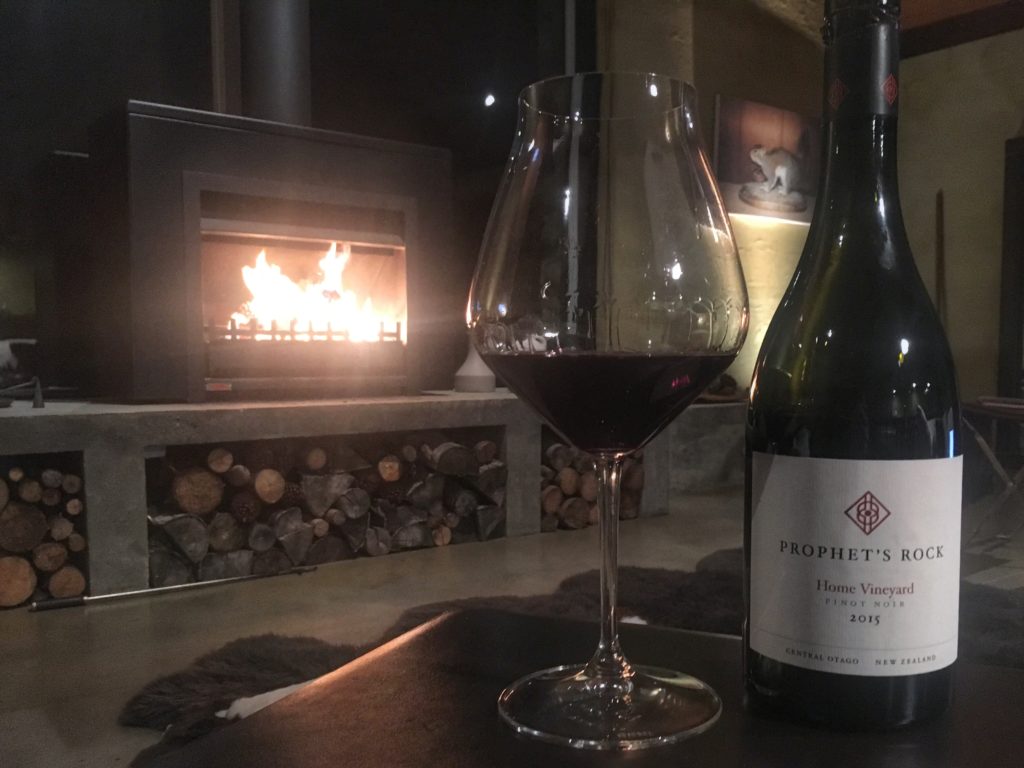
Prophet’s Rock Dry Riesling 2016
With a year in the bottle and almost a year on the lees, this is a complex Riesling that is beginning to reveal itself with hedonistic notes of blossom, honey and citrus peel. Coming from steep schist soils, the wine – typical of good Riesling – is terroir-transparent with a linear acidity and an intense minerality. However, the art of this Riesling is Paul Pujol’s artful patience in the winery – a year left undisturbed on the lees gives a richness to this Riesling, leaving it with a creamy, mouth-filling texture that is underpinned by acidity and mineral weight.
Prophet’s Rock Pinot Gris 2017
Notes of white pepper, pea shoots and white pear invade the glass and in the mouth this is full and aromatic wine with just a touch of sweetness, which is well-matched with refreshing acidity. A true Alsatian style Pinot Gris of the top order, made in Central Otago. It is a regular on the Fine Wines of New Zealand listings.
Prophet’s Rock Infusion 2017
“Is this your version of rosé?” I ask Paul, who responds in a fantastically non-committal shrug. Truthfully it says it all on the label: ‘Infusion’. This is a Pinot Noir made without any fermentation on the skins (so arguably a rosé) and it is Paul’s experiment to delve further into the light, gentle Pinot Noir spectrum. Flamboyant in floral and red berry aromas, with a crunchy and fresh acidity, it is the sort of wine you should drink chilled and order two bottles for lunch.
Prophet’s Rock Rocky Point 2017
From the steep slopes of the schist vineyard, this is a bright and aromatic Pinot Noir with great tension in the finish and a tongue-tingling texture. The process of making this wine is equally as delicate as the other Pinots but it is the rocky schist soils that speak: “They are vineyards that have structure,” explains Paul, “you don’t have to look for it in your winemaking.”
Prophet’s Rock Home Vineyard Pinot Noir (2014 & 2015)
These grapes are from the north-facing slopes of Prophet Rock’s ‘Home Vineyard’ overlooking Dunstan Lake. These slopes have a unique layer cake of soils: clay deep on the bottom with a thick layer of chalk formed by the weathering of schist over time. “It’s the site that takes a lot longer to unwind,” says Paul. “It needs longer in the barrel to integrate and longer in the bottle to start showing its true colours.”
The result of gentle winemaking and longer ageing is refined tannins, and a wine of nuance and length. The 2014 vintage shows a wine with bright red fruit notes with some floral and exotic spice notes, while the 2015 is a bit darker on the fruit spectrum and has more of a graphite note on the palate. Both are elegant and sophisticated Pinot Noir wines that show a powerful terroir in the vineyard and a gentle hand in the winery.
Prophet’s Rock Cuvee Aux Antopodes 2016
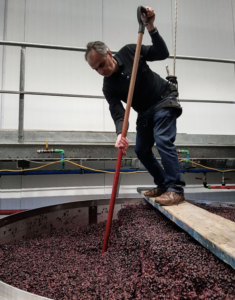
François Millet making Cuvee Aux Antipodes
This wine is made in collaboration with François Millet from Burgundy, who makes some of the finest Pinots (with prices to match) at Comte Georges de Vogüé. It is a Burgundian’s interpretation of Central Otago terroir, and specifically of Prophet Rock’s Home Vineyard.
When François decided to make this wine, Paul went out and bought the identical – old-school – equipment that François uses in Burgundy, so that the vineyard would literally be the only difference in the wine. The equipment was nothing fancy – in fact they are the same tools winemakers have used for centuries in Burgundy. But the art is in the hand-crafting and attention given to the wine, something which is very akin to Paul’s own philosophy at Prophet’s Rock.
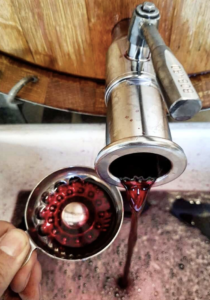
The racking technique
When the wine is removed from the barrel, it is literally decanted by pouring it in a slow motion from the tap at the bottom and testing the clarity of the wine continuously by taking regular samples in a cup. As soon as a spot of sediment appears in the cup, the barrel is tilted back and that’s the end of your lot.
“It’s extremely precise,” says Paul, “sometimes we have the idea that modern ways are better but actually these old methods are more precise. I took some of the wine to be tested and it has the clarity of a filtered wine!” But this wine is, of course, unfiltered and it retains that complexity, nuance and finesse. There’s a lovely density of berry fruit in this wine, but it also has fine and seductive spice notes with a long finish that has both the smoothness of silk, but also the tension.
Prophet’s Rock Retrospect 2013
I really love the philosophy of this – Prophet’s Rock’s iconic wine. “I resisted making a ‘reserve’ wine for several years, but by 2010 I felt that the wine was there,” says Paul explaining his thought process behind releasing the most expensive wine of the range. “We take a tiny snapshot of the vineyard, without using any more extraction or oak, just the benefit of time. So we release it 5 years after vintage.” In my opinion, time really is what makes the difference between a wine being good and great, or great and sublime. Retrospect 2013 almost hits the sublime scale.
Rich black cherry fruit with sage and white truffle and a long, silky finish. If I can gauge anything about the capability and style of the winemaker, I’d start banking on the new vintages of Prophet’s Rock Retrospect now. Does en primeur exist in New Zealand yet? If it does, I’m in. I have no doubt future releases of Retrospect will be sublime.

Read more about Central Otago Pinot Noir and its sub-regions with these different guides:
- The anomaly that is Central Otago
- Trailblazing in Bannockburn: Blair Walter, Felton Road
- Then and now: Grant Taylor, Valli Wines
- Central Otago wine region guide: Fast Facts & Terroir Essentials


